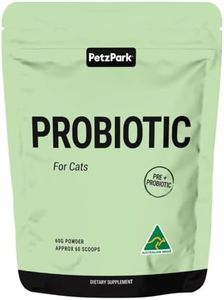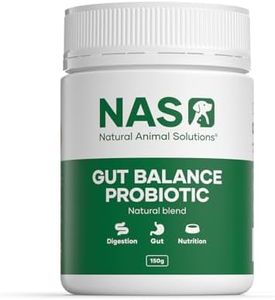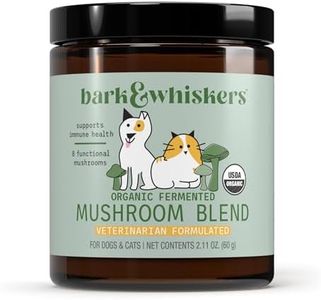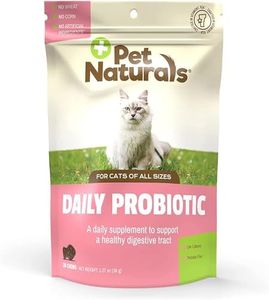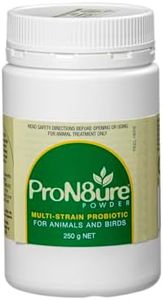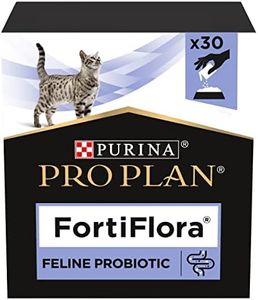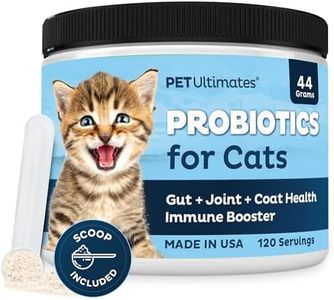We Use CookiesWe use cookies to enhance the security, performance,
functionality and for analytical and promotional activities. By continuing to browse this site you
are agreeing to our privacy policy
10 Best Cat Probiotics
From leading brands and best sellers available on the web.Buying Guide for the Best Cat Probiotics
Choosing the right cat probiotics can help support your cat’s digestive health, immune system, and overall well-being. Since there is a wide variety of probiotic products available, it is important to understand what factors matter most, how they affect your cat, and how to decide which product is the best fit for your furry friend. Start by identifying your cat’s specific health concerns (such as digestive upset, recent antibiotic use, age, or stress), and use these needs to help you narrow down your choices. Always consult your veterinarian before introducing a new supplement.Strain DiversityStrain diversity refers to the different kinds of beneficial bacteria included in the probiotic. Each bacterial strain can offer different benefits, such as helping with digestion, supporting immunity, or controlling certain types of diarrhea. Probiotics can have just one strain (single-strain) or several strains (multi-strain). Single-strain products may target a specific issue, while multi-strain options provide broader support. If your cat has a particular health need, look for strains known to address it, but for general wellness, a product with a variety of strains may be most helpful.
CFU Count (Colony Forming Units)CFU count is a measure of the number of live, beneficial bacteria in each serving of the probiotic. Higher CFU counts generally mean more bacteria are provided, which may be more effective for some issues. Lower counts (around 1-5 billion CFU) are often enough for daily support or mild issues, while higher numbers (5-10 billion CFU or more) may be suggested for cats with more significant digestive troubles. However, more is not always better—some cats have sensitive stomachs and do well on lower doses. Match the CFU count to your cat’s needs and follow veterinarian recommendations to avoid upsetting your cat’s tummy.
Delivery FormProbiotics for cats come in several forms, including powders, capsules, treats, and liquid drops. Powders can be sprinkled easily over food and are a good choice for picky eaters, while capsules may be given directly or opened and mixed with food. Treats are convenient but may contain extra ingredients, and liquids are easy to dose but may have a taste some cats dislike. Choose the delivery form that best suits your cat’s eating habits and what you think will be easiest for both you and your pet to manage.
Added IngredientsSome probiotics include extra ingredients like prebiotics (which help good bacteria grow), vitamins, or flavor enhancers. Prebiotics can give the probiotics a better chance to thrive in your cat’s gut, while added vitamins may support overall health. However, unnecessary additives, fillers, or artificial flavorings aren’t always beneficial, especially if your cat has allergies or sensitivities. Check the ingredient list to ensure it aligns with your cat’s dietary needs and avoid products with potential allergens.
Storage and Shelf LifeProbiotics are made of live bacteria, so storage and shelf life are important to ensure they remain effective. Some need to be refrigerated to maintain potency, while others are shelf-stable. Shelf-stable options are more convenient if you travel often or want to store the product in different places, but always check the expiration date. Pick a product with storage requirements that fit your lifestyle and double-check you can use the product before it expires to get the full benefit.
